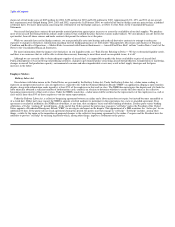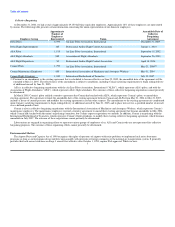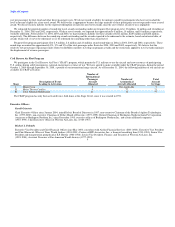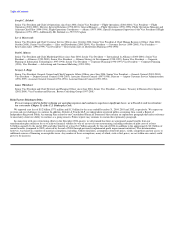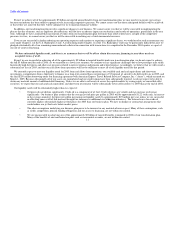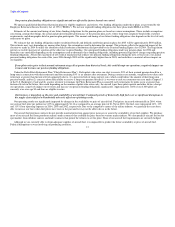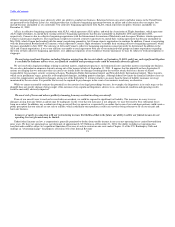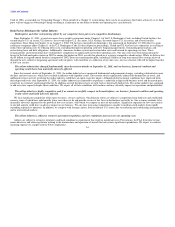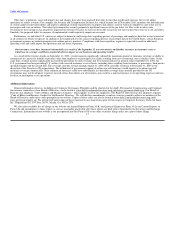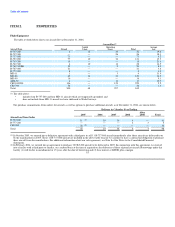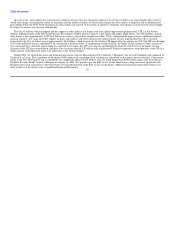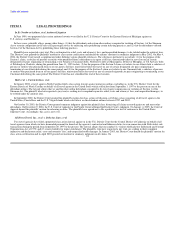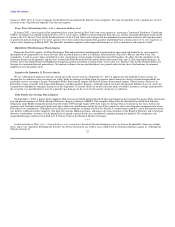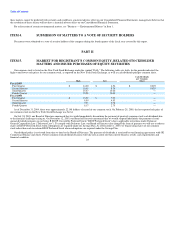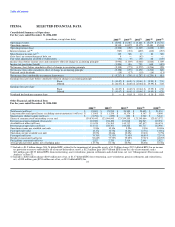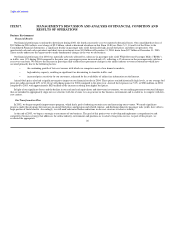Delta Airlines 2004 Annual Report Download - page 20
Download and view the complete annual report
Please find page 20 of the 2004 Delta Airlines annual report below. You can navigate through the pages in the report by either clicking on the pages listed below, or by using the keyword search tool below to find specific information within the annual report.
Table of Contents
Code of 1986, as amended (an "Ownership Change"). Even outside of a Chapter 11 restructuring, there can be no assurances that future actions by us or third
party will not trigger an Ownership Change resulting in a limitation on our ability to deduct net operating loss carryforwards.
Risks Factors Relating to the Airline Industry
Bankruptcies and other restructuring efforts by our competitors have put us at a competitive disadvantage.
Since September 11, 2001, several air carriers have sought to reorganize under Chapter 11 of the U.S. Bankruptcy Code, including United Airlines, the
second-largest U.S. air carrier, US Airways, the seventh largest U.S. air carrier, ATA Airlines, the tenth-largest U.S. air carrier, and several smaller
competitors. Since filing for Chapter 11 on August 11, 2002, US Airways emerged from bankruptcy, but announced on September 12, 2004 that it is again
seeking to reorganize under Chapter 11 of the U.S. Bankruptcy Code. In their respective proceedings, United and US Airways have reduced or are seeking to
reduce their operating costs by reducing labor costs, including through renegotiating collective bargaining agreements, terminating pension plans, and
restructuring lease and debt obligations. Additionally, American Airlines restructured certain labor costs and lowered its operating cost base. These
reorganizations and restructurings have enabled these competitors to significantly lower their operating costs. Our unit costs went from being among the
lowest of the hub-and-spoke carriers in 2002 to among the highest in 2004, a result that placed us at a serious competitive disadvantage. While we believe that
the $5 billion in targeted annual benefits (compared to 2002) from our transformation plan, including $1 billion in long-term annual cost savings achieved
through the new collective bargaining agreement with our pilots, will contribute to a reduction of our unit costs, our cost structure will still be higher than that
of low-cost carriers.
The airline industry has changed fundamentally since the terrorist attacks on September 11, 2001, and our business, financial condition and
operating results have been materially adversely affected.
Since the terrorist attacks of September 11, 2001, the airline industry has experienced fundamental and permanent changes, including substantial revenue
declines and cost increases, which have resulted in industry-wide liquidity issues. The terrorist attacks significantly reduced the demand for air travel, and
additional terrorist activity involving the airline industry could have an equal or greater impact. Although global economic conditions have improved from
their depressed levels after September 11, 2001, the airline industry has continued to experience a reduction in high-yield business travel and increased price
sensitivity in customers' purchasing behavior. In addition, aircraft fuel prices have recently been at historically high levels. The airline industry has continued
to add or restore capacity despite these conditions. We expect all of these conditions will continue and may adversely impact our operations and profitability.
The airline industry is highly competitive, and if we cannot successfully compete in the marketplace, our business, financial condition and operating
results will be materially adversely affected.
We face significant competition with respect to routes, services and fares. Our domestic routes are subject to competition from both new and established
carriers, some of which have substantially lower costs than we do and provide service at low fares to destinations served by us. Our revenues continue to be
materially adversely impacted by the growth of low-cost carriers, with which we compete in most of our markets. Significant expansion by low-cost carriers
to our hub airports could have an adverse impact on our business. We also face increasing competition in smaller to medium-sized markets from rapidly
expanding regional jet operators. In addition, we compete with foreign carriers, both on interior U.S. routes, due to marketing and codesharing arrangements,
and in international markets.
The airline industry is subject to extensive government regulation, and new regulations may increase our operating costs.
Airlines are subject to extensive regulatory and legal compliance requirements that result in significant costs. For instance, the FAA from time to time
issues directives and other regulations relating to the maintenance and operation of aircraft that necessitate significant expenditures. We expect to continue
incurring expenses to comply with the FAA's regulations. 16


